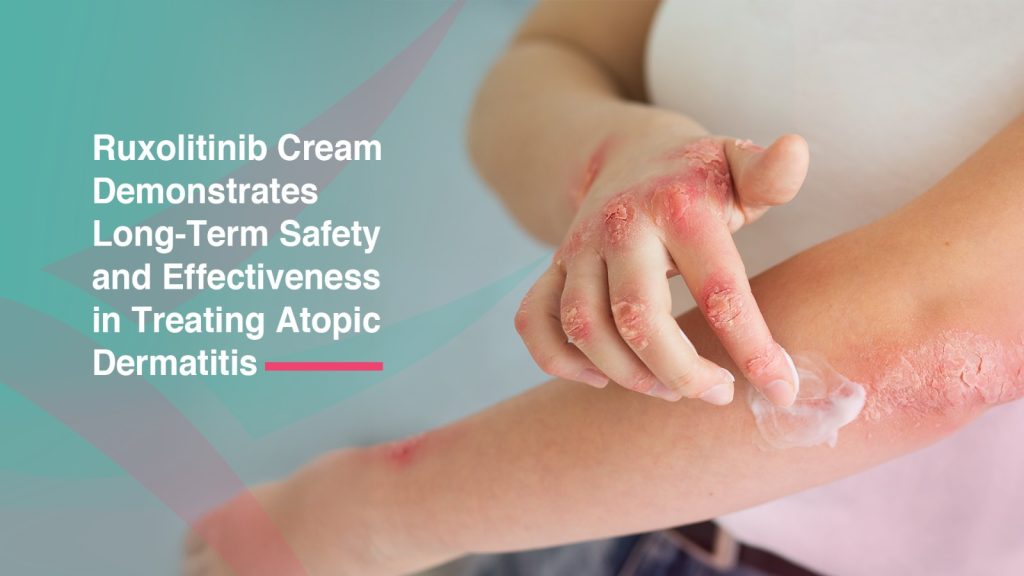Ruxolitinib cream has shown promising long-term safety and efficacy for the treatment of atopic dermatitis (AD), based on results from two large-scale phase 3 clinical trials—TRuE-AD1 and TRuE-AD2—published in The Journal of the American Academy of Dermatology. These studies involved more than 1,000 patients aged 12 and older who were monitored over a 52-week period. At the outset, participants were randomized to receive either 0.75% or 1.5% ruxolitinib cream or a vehicle (placebo) cream twice daily for an initial 8-week double-blind period. Patients who were initially treated with the placebo were then re-randomized to one of the ruxolitinib groups for an additional 44 weeks of open-label treatment, during which the cream was applied on an as-needed basis.
The trials aimed to assess both long-term safety and sustained disease control. The results were encouraging: between 74.1% and 77.8% of patients achieved clear or almost clear skin (Investigator’s Global Assessment score of 0 or 1) by week 52. Mean affected body surface area remained low throughout the study, indicating effective control of the disease over time. Notably, many patients were able to spend a significant portion of the 44-week extension period off treatment due to lesion clearance—median time off treatment was 38% and 44% for the 0.75% and 1.5% groups, respectively.
In terms of safety, treatment-emergent adverse events (TEAEs) were reported in approximately 63% of patients, with upper respiratory tract infections and nasopharyngitis being the most common. These were generally mild and consistent with expectations in the AD population. Serious adverse events were rare and mostly unrelated to the treatment, and there were no reports of deaths or treatment-related life-threatening conditions. Importantly, plasma concentrations of ruxolitinib remained low, and systemic exposure was minimal, suggesting that significant systemic Janus kinase (JAK) inhibition—associated with risks when using oral JAK inhibitors—was highly unlikely.
The study did have limitations, such as the absence of a vehicle control group during the long-term phase and the exclusive use of an as-needed treatment regimen without assessing proactive maintenance strategies. Nevertheless, the findings support the use of ruxolitinib cream as a safe and effective long-term treatment for AD. The results are particularly relevant given the unmet need for topical therapies that can be used safely over extended periods without significant systemic effects. Overall, ruxolitinib cream offers a valuable therapeutic option for patients with atopic dermatitis, combining robust disease control with a favorable safety profile in a real-world, as-needed application setting.
Reference: https://www.jaad.org/article/S0190-9622(22)03136-X/fulltext

